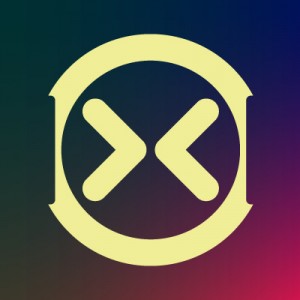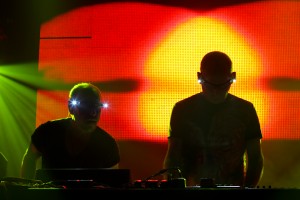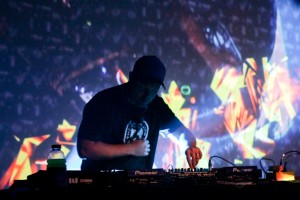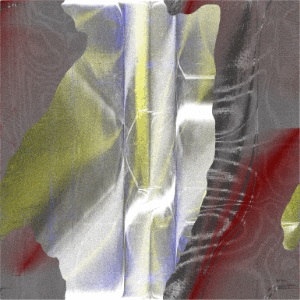 DECIBEL FESTIVAL, now in its 9th year, has become America’s premiere festival of electronic music. This year’s installment was five days long (September 26th—30th, 2012), and featured performances by over 170 musicians across 15 venues in Seattle. The festival’s organizers selected from a dizzying array of styles including nearly every electronic sub-genre, spanning the spectrum from club-friendly techno, bass music, electro, and IDM to downtempo, dub, ambient, and experimental territory. Given the sheer quantity of individual performances (over 30 per day, not including daytime boat parties and official after hours events), it was often difficult to choose between world-class artists performing in the same time slot at different venues. It was also difficult to review the festival in a conventional way because of these choices, so instead I’ll offer my thoughts on the performers I was able to see, with the knowledge that other attendees had completely different experiences during the festival.
DECIBEL FESTIVAL, now in its 9th year, has become America’s premiere festival of electronic music. This year’s installment was five days long (September 26th—30th, 2012), and featured performances by over 170 musicians across 15 venues in Seattle. The festival’s organizers selected from a dizzying array of styles including nearly every electronic sub-genre, spanning the spectrum from club-friendly techno, bass music, electro, and IDM to downtempo, dub, ambient, and experimental territory. Given the sheer quantity of individual performances (over 30 per day, not including daytime boat parties and official after hours events), it was often difficult to choose between world-class artists performing in the same time slot at different venues. It was also difficult to review the festival in a conventional way because of these choices, so instead I’ll offer my thoughts on the performers I was able to see, with the knowledge that other attendees had completely different experiences during the festival.

Day 1 ::
Within the festival’s programming, the Optical events were some of the most interesting, showcasing audiovisual collaborations and new media offerings, with a focus on ambient, modern classical, and experimental sounds. The first event of the festival was Optical / dB Films 1, consisting of UK duo Demdike Stare performing a live re-scoring of Jean Rollin‘s 1970 arthouse erotic horror film, The Nude Vampire. The film itself was more campy than erotic or horrific, but Demdike Stare delivered a churning miasma of ominous basslines, spooky atmospheres, turntable stabs, and thumping, tribal percussion loops, foreshadowing their excellent performance the following night. After the film re-scoring, I went to see part of the Optical 1 (Ghosts in the Shadows) event at the Triple Door, one of the festival’s most elegant venues. Brock Van Wey created big, enveloping, spacious washes of sound, with an abstract, nebulous video accompaniment by Anenon. The headliner for the showcase, German sound artist Robert Henke, set up in the center of the room and began his surround-sound performance with watery field recordings, then progressed to sustained sweeps of textures, ringing drones, crackles, and noises resembling wind through pipes. Some of his sounds were muddy and others too resonant, but overall the set was more innovative than his Monolake material and succeeded best in its more meditative, quieter parts and later oceanic swells. Henke also used a broader sonic palette than the last time I saw him doing a solo performance, at Montreal’s Mutek in 2007. After these ambient sounds, I headed over to the Showbox to catch one of the festival’s most pop-oriented headliners, Kimbra. Best known for her music videos and guest vocals in Gotye‘s 2011 hipster anthem, “Somebody That I Used to Know,” Kimbra is currently working her way across the US on her first headlining tour. Some of this New Zealand singer-songwriter’s compositions have been co-written by Australian producer Francois Tetaz (who’s worked with Gotye, Architecture in Helsinki, and in an earlier musical lifetime, darker acts like Snog and Shinjuku Thief). Kimbra’s voice draws comparisons to Nina Simone, whom she covered during the set and cites as an influence. Onstage, she was extremely energetic and was obviously having fun. Despite some frivolous wardrobe choices, her powerful vocals and pop song structures will guarantee future stardom. After her set I went in search of more cerebral fare at the Warp Records showcase, held at the Crocodile. Jimmy Edgar‘s disappointing set there relied heavily on boring dance music clichés: simple beats, diva samples, auto-tune, and chipmunk pitch-bending. Luckily the headliner, prolific UK IDM artist Clark, offered one of the best performances of the entire festival. His 2006 album Body Riddle remains one of my favorite Warp releases ever, and though Clark rarely performs in the US, I was impressed by the diversity of three performances I was lucky enough to catch in Europe from 2007—2009. This time his gear included a laptop, Moog Voyager, digital delay, and a modular synth. Clark was full of energy, delivering what sounded like mostly new material with updated versions of some songs from Throttle Promoter, Turning Dragon, and his latest album, Iradelphic. His overall mood was playful and more dancefloor-friendly than his glitchiest IDM forays, though his production skills, song structures, and choice of sounds are much more innovative than most “dancefloor-friendly” artists. His set was definitely the best possible way to cap off an excellent first day of the festival.

Day 2 ::
The second installment of the Optical / dB Films program was a screening of Liquid Music, a collaboration between Austrian experimental musician Fennesz and UK filmmaker Jon Wozencroft. The improvised audio soundtrack of shimmering, effects-laden guitar textures, composed shortly after the critically-acclaimed Endless Summer album, was successful. The 40-minute film itself, consisting entirely of shots of the surface of oceans and rivers, had moments of great beauty but felt too long due to the repetition of scenes and some questionable editing. Up next was Optical 2 (Ascension), at the Triple Door, though I was only there long enough to see one performer: Julianna Barwick. She sang ethereal, wordless vocals and used a loop pedal to layer them into an atmospheric choir with occasional piano sounds. Afterward I went to Seattle’s historic Paramount Theatre for the biggest show of the festival, titled Halcyonic in honor of the headliner, Orbital. These two brothers needed little introduction to older attendees of the festival, having been true pioneers of techno during the early years of Britain’s rave scene in the late 1980s and later headlining major international festivals like Glastonbury and Sonar. Their early work served as the first exposure to instrumental electronic dance music for many US listeners, including this reviewer and Sean Horton, Decibel’s founder. I caught them live in 1999 and 2001, and the eleven year gap since their last US tour has been a long one. Orbital’s sprawling set at Decibel included almost every song from their new album, Wonky, along with highlights from earlier in their career. Two songs from their first album (Belfast and Chime) were included, along with two from their second (set opener Time Becomes and the iconic Halcyon + On + On, complete with Bon Jovi and Belinda Carlisle samples). The performance was high-energy, with excellent lighting and LED arrays and the duo’s technical skills on full display. The newer material in the set was largely playful and melodic, with the exception of the bass-heavy stomper, “Beelzedub,” which featured sinister flash-cut videos of soldiers, nuclear explosions, and war. Audience response was enthusiastic and sustained, and the band returned to the stage after their main set for an encore song, Where Is It Going? Though it didn’t feature an appearance by Stephen Hawking or the entire venue turning into the Large Hadron Collider (as in the song’s epic performance at the opening ceremony of the London 2012 Paralympics), the track sounded great and sent everyone off into the night in high spirits. I immediately headed over to the Melrose Market Studios, a blacked-out room that was the perfect setting for the Modern Love label showcase. First up was Cut Hands, the “Afro noise” project of power electronics legend William Bennett (of Whitehouse infamy). Though using only a laptop, Mr. Bennett conjured driving, propulsive rhythmic percussive sounds that can best be described as feverish. As if to accentuate this, he began sweating and unbuttoned his shirt while twitching convulsively during the performance and coughing repeatedly. Whether genuine illness or performance art, his onstage persona heightened the mood conveyed by his sounds, which showed their African influences and also shared stylistic similarities to This Morn’ Omina, 5F_55, and other European tribal/ritual noise acts. Immediately afterward, the highlight of the night and in fact a high point of the festival was the performance of Demdike Stare. They carried on the tribal and hypnotic feel of Cut Hands, but with more foreboding and occult overtones. This Manchester project is named after a 17th century witch and performs in front of ’60s films of Church of Satan founder Anton LaVey, but given their top-notch production skills, it would be a mistake to dismiss the band’s dark preoccupations as mere gimmick. Their 2011 release Tryptych, which collects three albums previously available only on vinyl, incorporates diverse influences from dub to Middle Eastern traditional music into an essential collection that received uniformly glowing reviews everywhere. Their doom-laden, delay-drenched sound appeals to fans of Muslimgauze, Scorn, Lustmord, and Raime, but doesn’t quite sound like any of them. At their most introspective, Demdike Stare create soundtracks for late nights spent alone and sleepless, and at their heaviest they are truly creating the soundtrack for the Apocalypse, not as fiery cataclysm but as slow plague. Labelmate Andy Stottfollowed up with a slickly produced set of his dubby, atmospheric minimal techno, which would have been the best of any other lineup, but it couldn’t approach the dark beauty of Demdike Stare.

Day 3 ::
The third event in the festival’s Optical series was focused on the 30th anniversary of Touch, the UK label and collective. The night started with a nice set of ambient tones and crackly textures from The Sight Below (aka Seattle musician and Optical series co-curator Rafael Anton Irisarri). Next was Norwegian ambient producer Biosphere, whose performance at Decibel in 2007 was impressive and memorable. This time around he stumbled with overbearing synthetic beats early in his set, but recovered and improved as the set progressed. Unfortunately he was handicapped by embarrassingly weak visuals from Jon Wozencroft, whose grainy videos of London appeared to have been shot with ’90s consumer camcorders, attempting to allude to a surveillance state but not even making use of a tripod at times. Biosphere’s performance with Lustmord several months earlier at the Communikey Festival was accompanied by more tasteful and relevant visuals, making Wozencroft’s amateurish videos more disappointing in comparison. The closing performer at this showcase was Eleh, a mysterious figure who takes a “deep listening” approach to composition, influenced by and earning comparisons to Pauline Oliveros and Eliane Radigue. He used what appeared to be a large Buchla modular rig and a vintage Sequential Circuits synth, though his drones were so minimal that he might have been using anything. Following this event I switched gears and drove across town to the University district to see a show at the Neptune Theater, headlined by Shpongle. This show, one of two appearances by Shpongle on consecutive nights, definitely appealed to a younger audience, but ended up being one of the most fun nights of the festival. Shpongle’s Simon Posford established himself as one of the world’s best psytrance producers in the mid-1990s (recording as Hallucinogen and under other names), before co-founding Shpongle in 1998 with Raja Ram. Shpongle performances with a full live band are exceedingly rare, but Posford’s solo Shpongle performances like these at Decibel feel like more than just DJ sets. Remembering sets of his that I’d seen before (most recently at Asheville’s Moogfest in 2010), I was pleased to discover that Posford has raised the bar this year. One of the most impressive aspects of the set was the large video-mapped sculpture within which Posford created his shamanic magic. The video constantly changed and evolved, presenting a kaleidoscope of brightly colored psychedelic patterns. Posford played heavily remixed versions of songs from every Shpongle album, playfully weaving a sonic tapestry of mind-warping samples, soaring flutes, flamenco guitars, samba rhythms, and liquid softsynths that kept everyone dancing (even those unaltered by entheogens).

Day 4 ::
The fourth Optical showcase (Discreet Tones) started an hour and forty minutes late due to unspecified technical problems, creating difficulties for attendees who wanted to see other acts the same evening. Opening musician CFCF delivered pretty piano lines but faltered with vocals better suited for the adult contemporary genre, and lacking in confidence. Headliner Nils Frahm played out of order, but wowed the audience with a bravura performance on both grand piano and Rhodes electric piano. Nils broke one of his thumbs in a fall several months earlier and joked that doctors told him he could only play if he used his fist, starting his set by playing exposed piano strings with mallets. Instead of staying for more bands at Optical, I headed for the Showbox to see the Ghostly International label showcase. I arrived in time to catch perennial Decibel favorite Lusine, though his sound has become more generic and less innovative each time I’ve seen him over the years. His current music is well-produced but has moved too far away from the more interesting elements of his best albums A Pseudo Steady State (2000) and Serial Hodgepodge (2004), now lacking even the creative flourishes found in A Certain Distance (2009). Following his set, however, Tycho delivered an amazingly tight and beautiful concert of wistful, melodic music. Songwriter Scott Hansen has taken his music to new heights since performing at Decibel in 2008, releasing the deeply satisfying album Dive on Ghostly in 2011 and assembling a live band to perform his music. During a performance earlier this year at Austin’s SXSW music festival they sounded as though they needed more practice, but here at Decibel they could not have been more solid. The accompanying video projections, also created by Hansen, featured the trademark washed-out pastel color schemes and nostalgic feel of his graphic design work as ISO50. After Tycho, I drove down to the other Showbox location to catch DJ Shadow at the festival’s Pioneers of Rhythm showcase. DJ Shadow, whom I hadn’t seen since a London performance with Cut Chemist in 2008, continues to throw every genre of music into a blender, dropping mashups and remixes of old school hip hop, reggae, lots of west coast bass music, and even the Simpsons theme song. Despite the variety, some of us came to hear DJ Shadow’s original music, and were rewarded with Organ Donor (from his debut album), which received the loudest crowd response of the show. Staggering out into the night afterward, I tried to shake off a recently acquired fever (I blame William Bennett), exhausted after four days of great music and ready to sleep before the fifth.

Day 5 ::
Optical 5 (Undercurrent) closed out the week with a nice lineup of ambient musicians. The first of these, Loscil, performed his brand of stark, synthetic ambience with piano accompaniment that at times worked beautifully but occasionally became heavy handed. Christina Vantzou followed with minimal sounds from a laptop and an ensemble of two cellos, violin, viola, and clarinet. The group’s sustained strings were very similar to Christina’s work in The Dead Texan, and to her partner Adam Wiltzie‘s music with Brian McBride as Stars of the Lid. Finally, venerable Midwest duo Windy & Carl slowly unfurled a spacious blanket of warm guitar tones. Windy’s breathy vocals distracted slightly, but not too much, and the projected videos of rocky beaches worked well. The pair’s sound felt very warm and organic, a nice counterpoint to some colder sounds heard at the festival during the week. After the Optical show I decided against the high-energy dancefloor experience of the festival’s nominal finale at Neumos and instead went to the Crocodile for the Autonomous Music showcase. I arrived during a live set by The Great Mundane, a Portland-based musician I hadn’t seen since his 2010 tour with Kilowatts and Aligning Minds. His music is quirky, funky, and melodic, and his technical skills as a producer and performer are extremely good. Unfortunately, his set seemed somewhat unfocused due to the inclusion of too many remixes of other artists and too much veering off into uninteresting hip hop territory. Up next was Yppah, a Ninja Tune artist formerly based in Houston but now living in Long Beach. His shoegaze-influenced pop/rock has been getting more and more accessible over the last few years, and his most recent album, Eighty One, has earned him lots of radio airplay. He was joined onstage by frequent collaborator Anomie Belle (who had performed solo earlier in the evening), on synths, guitars, vocals, and violin. Though the two musicians live in different cities, they work well together both in the studio and on stage, and the uplifting songs they crafted were a great conclusion to the festival for me.
After five long days overstuffed with music, I can only thank the Decibel organizers for another successful festival, and look forward to next year!
Pictured in this visual archive: Demdike Stare, Kimbra, Clark, Julianna Barwick, Orbital, Cut Hands, Andy Stott, Shpongle, CFCF, Nils Frahm, Lusine, Tycho, DJ Shadow, Loscil, Christina Vantzou, The Great Mundane, Yppah, Anomie Belle.






















































![Pole :: Tempus Remixes (Mute) — [concise]](https://igloomag.com/wp/wp-content/uploads/2025/04/pole-tempus-remixes_feat-75x75.jpg)






![Hasbeen :: Bunker Symphonies II (Clean Error) — [concise]](https://igloomag.com/wp/wp-content/uploads/2025/04/hasbeen-bunker-symphonies-ii_feat-75x75.jpg)